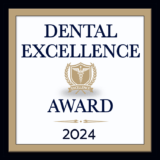
Dentists would be a lot less busy if there were no such thing as gum disease. Unfortunately, it’s a fact of life for everyone, even for patients of Shorewood Family Dental Care. Gum disease, also known as gingivitis or its more advanced form periodontitis, happens for two reasons: we all have whole colonies of bacteria in our mouths, and those bacteria love the sugars in our foods.
What is Gum Disease?
Gum disease begins when bacteria in the mouth combine with a protein in our saliva to create a thin, sticky, invisible film called plaque. Plaque forms on the gum line around the teeth in as little as 24 hours. However, regular and careful brushing and flossing can easily remove it. That’s the good news.
If plaque is left undisturbed, those bacteria feed off the sugars in our mouths and excrete toxins. Those toxins are very irritating to gum tissue, and your gums can change from being firm and a healthy pink to being soft, puffy, and a dusky red or even purple. Often, the first thing you notice about having gingivitis is that your gums bleed when you brush or floss. The bristles of your toothbrush may look red.
When plaque is left undisturbed for longer periods of time, gum disease gets worse. Plaque can harden into something called tartar, which is even harder than the enamel that protects your teeth! And the continued irritation to your gums can cause them to pull away from your teeth. That allows bacteria to get below the gum line where they may ultimately attack the roots of your tooth, causing it to fall out, or even attack your jawbone.
This later stage of gum disease is called periodontitis, and it requires professional help. Periodontitis has been linked with a number of health issues, including heart disease, lung problems, diabetes, Alzheimer’s disease, and even colorectal cancer! More than just your teeth are at risk.
How Gum Disease is Treated
The traditional approach to treating gum disease is through a deep teeth cleaning. This process is done by using metal instruments to remove the tartar. Remember, tartar is harder than your dental enamel; there’s no way that you can remove it by brushing and flossing. Trying to remove tartar yourself with an instrument of some kind can damage your enamel, and that’s the last thing you want.
When tartar is above the gum line, the process of removing it is called dental scaling. When it’s below the gum line, the process is called root planing because it also involves polishing the roots to give bacteria fewer places to hide.
In many cases, there are pockets of bacteria below the gum line that have to be removed. Antibiotics are often placed below the gum line to speed the healing process.
Fortunately, our doctors offer the most advanced treatment available for fixing teeth with gum disease: diode laser treatment!
Imagine having diseased gum tissue vaporized and sealed against bleeding instantly! That’s the power and the beauty of laser treatment. Our doctors can specifically target dark, diseased tissue and remove it in a flash. The laser cauterizes the tissue, preventing bleeding and lowering the chance of reinfection. There’s often significantly less pain after laser treatment than after conventional treatment.
In practice, conventional and laser treatment of gum disease are often combined for the best possible outcome, depending on a person’s needs.
Once your gums have healed, Shorewood Family Dental Care offers a number of options to restore your gums and any affected teeth.
Fight Back Against Gum Disease!
Your first line of defense against fixing your teeth with gum disease is good oral hygiene at home. However, regular dental cleanings and checkups are needed too. If you’ve been putting off your cleaning and exam, take action now. Call our office for an appointment today at 815-725-5991. You can also request an appointment using our online form.




